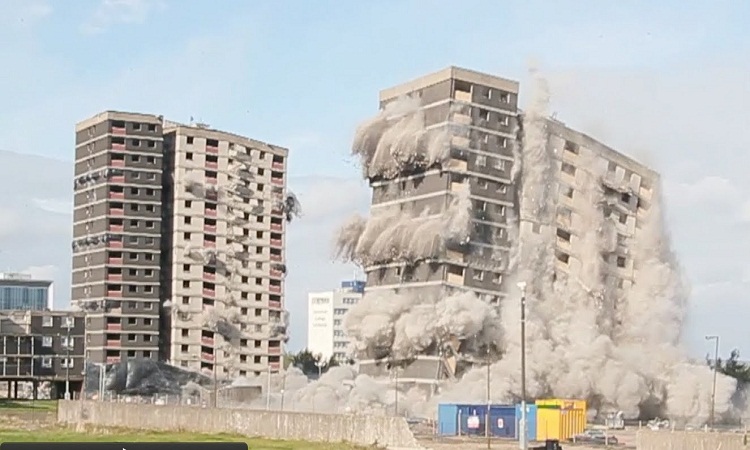
Planning your first building demolition can be an exciting yet daunting task, especially if you are new to the process. Whether you are demolishing a small residential property or preparing for a larger commercial project, there are multiple steps involved to ทุบตึกฟรี ensure the job is done safely, efficiently, and in compliance with local regulations. Proper planning is essential to minimize risks, avoid costly delays, and achieve a successful demolition. From conducting a site assessment to choosing the right demolition method, every phase requires careful attention to detail. Here’s a beginner’s guide to planning your first building demolition.
The first and most critical step in any demolition project is conducting a thorough site assessment. This initial inspection helps to identify potential hazards, assess the structural condition of the building, and determine the most effective demolition approach. A team of experts, including engineers and demolition contractors, should assess the building’s layout, materials, and any hidden dangers, such as asbestos, lead, or unstable structures. This process also includes checking utility connections like gas, electricity, and water to ensure they are safely disconnected before demolition begins. The site assessment is vital for creating a demolition plan that prioritizes safety and efficiency, reducing the likelihood of costly surprises later on.
Once the site assessment is complete, the next step is to obtain the necessary permits and approvals from local authorities. Demolition projects typically require permits to ensure that the work is in compliance with zoning laws, building codes, and safety regulations. In many regions, the permit application process involves submitting detailed plans for the demolition, including the proposed timeline, the demolition method, and waste management strategies. It’s important to allow plenty of time for approval, as local governments often require several weeks to process permit applications. Failing to secure the proper permits can result in fines, delays, or even the suspension of the project. It’s also essential to consider environmental regulations, such as guidelines for handling hazardous materials or waste disposal, as these vary by location.
After securing the necessary permits, the next step is to choose the appropriate demolition method. There are several methods of demolition, each with its own advantages and considerations. The choice of method largely depends on the building’s size, location, and structure. The two most common demolition methods are mechanical demolition, which uses heavy machinery like excavators and bulldozers, and explosive demolition, which involves the controlled use of explosives to bring down large buildings. For smaller buildings, manual or deconstruction methods may be appropriate, where materials are carefully dismantled by hand for reuse or recycling. A professional demolition contractor will help determine the best method based on the project’s specific needs and the surrounding environment. The goal is to choose a method that ensures the structure is safely demolished with minimal impact on the surrounding area.
Safety is one of the most important aspects of any demolition project. Before demolition begins, a comprehensive safety plan must be developed to protect workers, nearby residents, and the environment. This plan should include site security measures, such as barricades, warning signs, and exclusion zones to keep unauthorized individuals out of the danger area. Depending on the demolition method, workers may need specialized personal protective equipment (PPE), including hard hats, safety goggles, hearing protection, and respiratory protection. Additionally, safety protocols for handling hazardous materials, such as asbestos or lead, must be strictly followed. Workers should undergo training on these procedures to minimize the risk of exposure. A safety officer should be designated to oversee the site and ensure that all safety standards are met throughout the demolition process.
Finally, effective waste management and recycling are essential components of planning your first building demolition. Demolition produces a significant amount of debris, and properly managing this waste can help reduce environmental impact and save costs. Before beginning the demolition, determine how the materials will be sorted, recycled, or disposed of. Commonly recyclable materials include concrete, steel, wood, and glass, which can be sent to specialized facilities for processing. Some materials may need to be disposed of in specific ways due to hazardous components, such as asbestos, chemicals, or lead paint. Implementing a waste management plan can help ensure compliance with environmental regulations and make the project more cost-effective. In some cases, you may even be able to sell or donate salvaged materials, such as doors, windows, or bricks, for reuse in other projects.
In conclusion, planning your first building demolition requires a thorough understanding of the process, from conducting a site assessment to ensuring proper waste management. By assessing the building’s condition, obtaining the necessary permits, choosing the appropriate demolition method, ensuring worker safety, and managing waste responsibly, you can set yourself up for a successful demolition project. It’s crucial to work with experienced professionals who can guide you through each stage, providing the expertise needed to navigate potential challenges and ensure that the demolition is completed safely, efficiently, and within budget. With the right planning and preparation, your first demolition project can be a rewarding and successful experience.